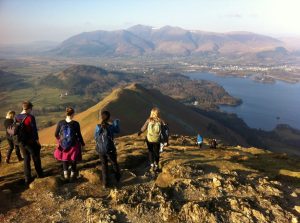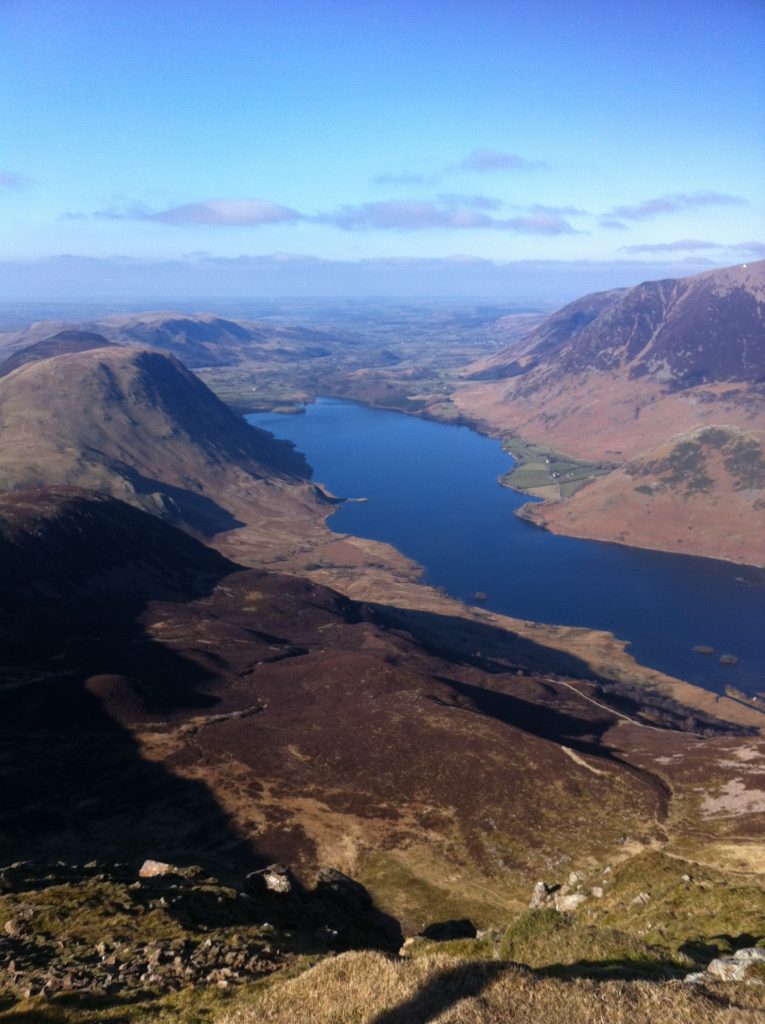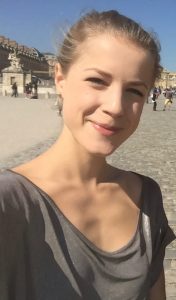Friday, 5:30 pm. It was finally the end of a long week and a busy term; however, for a few medical students the activities were only just beginning. Members of the HYMS Wilderness Medical Society were setting off to the Lake District for a weekend of hiking to precipitous summits, indulging in the serene landscapes, and learning handy expedition skills from practicing doctors.
The Wilderness Medicine Society explained
 The well-established student-led group promotes outdoors exploration and opportunities for both Hull and York based medical students. Whether you have already decided on a future career in this field or simply enjoy being outdoors, the society has something to offer. The events are wide ranging with regular rock-climbing, walks, trips to national conferences and even summer sailing expeditions. A particular favourite of mine was the winter-skills course held in Snowdonia, which required us to wield ice-axes and strap on the crampons to conquer some pretty gnarly snow-capped mountains.
The well-established student-led group promotes outdoors exploration and opportunities for both Hull and York based medical students. Whether you have already decided on a future career in this field or simply enjoy being outdoors, the society has something to offer. The events are wide ranging with regular rock-climbing, walks, trips to national conferences and even summer sailing expeditions. A particular favourite of mine was the winter-skills course held in Snowdonia, which required us to wield ice-axes and strap on the crampons to conquer some pretty gnarly snow-capped mountains.
Having enjoyed the previous events so much, it was unsurprising that the annual Lake-District trip also proved immensely popular; it was in fact oversubscribed in a matter of hours. So I was fortunate to get a place, and despite the hectic week, I could hardly complain that a four-hour-long journey still remained between us and our destination – Keswick, Cumbria.
Saturday: Navigation, Hay stacks and High Crags
Few things could have tempted me from my slumber so early on that cold Saturday morning, but the prospect of steaming bacon and scrambled eggs was just sufficient. And so the day commenced, a hearty cooked breakfast was devoured by all, in full knowledge that we would require as much energy as possible for the walk ahead.
The plan was to hike from Buttermere, skirting the southern shore of the iconic lake and ascending to the encircling ridge at High Crag, from which point we would walk north again. This appeared straightforward, but as ever the committee had meticulously planned the 10 mile route in consideration of the conditions, interests and abilities of the group. We divided into three teams given our fairly large number (around 20 people), which enabled a staggered start. The other benefit was to mix everyone regardless of year, even with past students now returning as qualified doctors.
The interesting assortment of students always leads to equally interesting conversations – a perfect combination whilst rambling through the idyllic countryside. It was easy to let the mind wander and I soon realised I had been strolling along just as freely as my thoughts, when Joe Vernon – last year’s president, presented me with a map.

‘Can you give me a six-figure grid reference of our position?’
I had only momentarily forgotten that improving navigation skills was a main aim of the trip and essential for any journey outdoors. Fortunately, my previous trips had ingrained the process in my memory:
Step 1: Don’t look at the map! Features, contours and landmarks of the landscape must be identified first otherwise you tend to ‘make the map fit what you are seeing’
Step 2: Along the corridor up the stairs. With the map oriented and position pointed out, you can identify the latitude and longitude.
That may be a simplification, but with practice and above all the clear, knowledgeable guidance from the committee the skills do become easier every time.
We modified the route with a quick scramble up Hay Stacks, a craggy peak which promised and delivered views only the wide angles of GoPro shots could fully capture. By the end of the walk, a friend in first year, who had never navigated before, understood bearings, resections and the concept of magnetic north, true north and variation – so much for a study-free weekend. Nonetheless, seven hours of physical/mental exertion meant we later felt fully deserving of a Lakeland beverage, goulash and sumptuous puddings.
Sunday: A career off the beaten track?
The morning featured medical expedition skills workshops from Dr Ben Marshall and Dr Joe Wallace, a submarine doctor and wilderness medic respectively, both HYMS alumni with impressive, unusual careers.
Water sourcing and purification was the basis of one, arguably essential station. In truth, the topic was a little dry for discussion, until we had the pleasure of taste-testing the iodine and chlorinated water, the latter being unsurprisingly reminiscent of swimming pools.
Fracture management was led by Dr Wallace, who introduced us to equipment from SAM splints (lightweight emergency fracture supports) to Donway, Sager and Kendrick traction devices. Of course, there is no substitute for practice so, comically, everyone ended with limbs bundled up in an array of contraptions. Likewise, demonstrating the portable altitude chamber (PAC) was hands on for one volunteer, preferably a non-claustrophobic individual. The PAC is designed to accommodate one person for emergency management of severe altitude sickness but essentially it resembles a large sealable plastic-bag. I suppose there is ingenuity in simplicity and somehow I think I could tolerate the cosy capsule if ever caught in this critical situation.
The day concluded appropriately with two lectures on approaches to a patient in the wilderness and careers in expedition medicine. I for one was inspired, so the final walk that afternoon from the Cumbrian fell Catbells was another great opportunity to ask questions and above all indulge in the great outdoors.
 Alice Fort-Shaale is a second year HYMS medical student with a keen interest in surgery and wilderness medicine. In her spare time she loves travelling, sailing and skiing.
Alice Fort-Shaale is a second year HYMS medical student with a keen interest in surgery and wilderness medicine. In her spare time she loves travelling, sailing and skiing.

